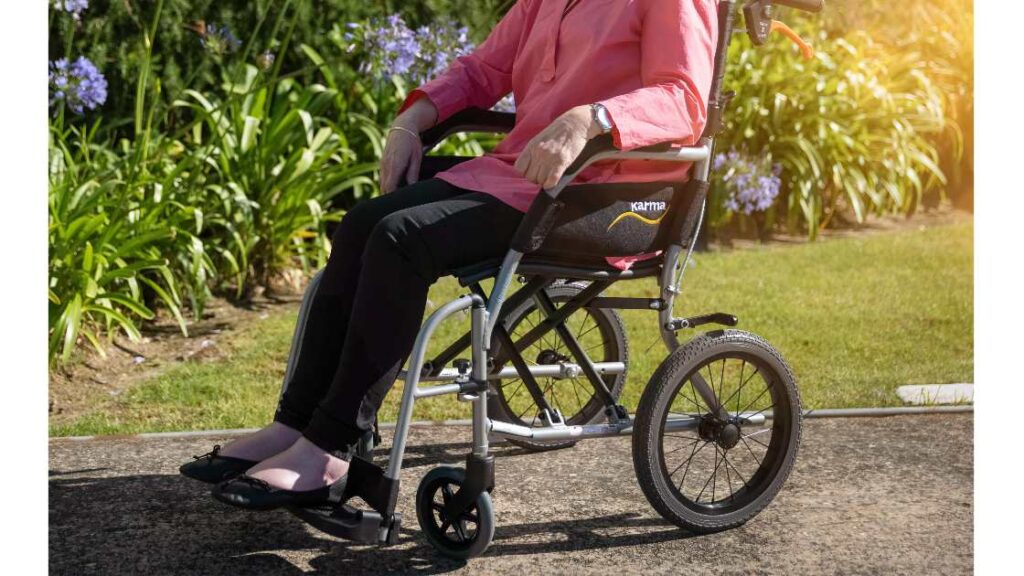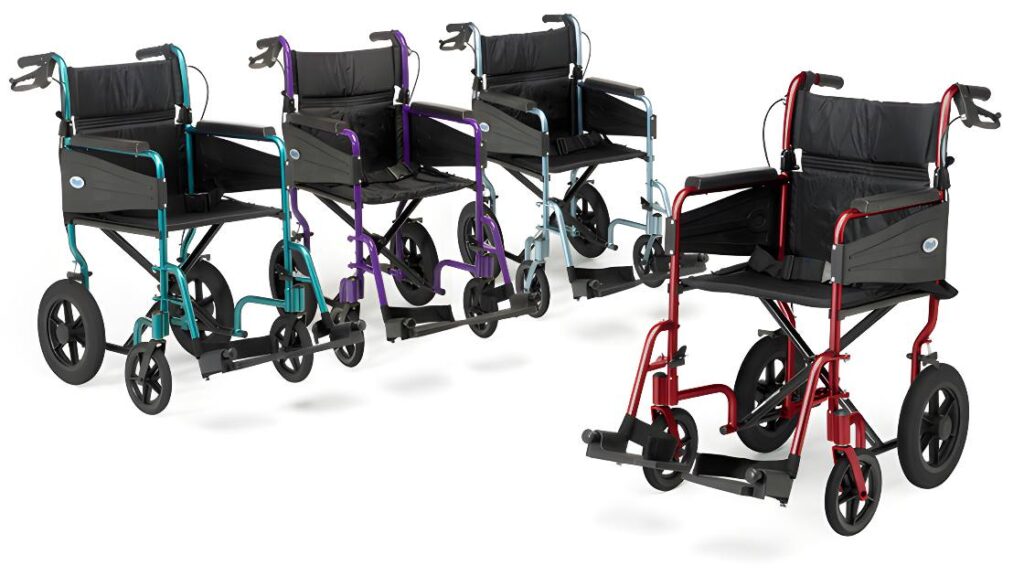
Are you looking for the ideal transit wheelchair to navigate the bustling city streets? Look no further! In this comprehensive guide, we will walk you through the essential factors to consider when buying the perfect transit wheelchair for your needs. With our expert advice, you'll be able to make an informed decision and confidently traverse urban landscapes.
When it comes to selecting a transit wheelchair, comfort, durability, and maneuverability are key. Our top priority is finding a wheelchair that fits seamlessly into your lifestyle, enabling you to travel around the city with ease. Whether you're commuting, sightseeing, or simply enjoying a day out, having the right wheelchair can significantly enhance your mobility and independence.
From lightweight and foldable designs to advanced features like height-adjustable armrests and anti-tip wheels, we'll explore a range of options specifically tailored for urban environments. Additionally, we'll consider factors such as transportation, storage, and accessibility to ensure your wheelchair seamlessly integrates into your daily routine.
Don't let the challenges of navigating the city limit your independence. Join us as we navigate the world of transit wheelchairs and equip you with the knowledge to choose the perfect one for your urban adventures.
Table of Contents
Benefits of using a transit wheelchair
When it comes to navigating the city, a transit wheelchair offers numerous benefits. Firstly, transit wheelchairs are designed to be lightweight and compact, making them easy to maneuver through crowded streets and tight spaces. Their smaller size also makes them more portable, allowing for hassle-free transportation and storage. Additionally, transit wheelchairs often have features like swivel seats and smaller turning radii, enabling smooth navigation even in cramped urban environments.
Another advantage of using a transit wheelchair is the increased accessibility it provides. Many cities have improved their infrastructure to accommodate individuals with mobility challenges, and transit wheelchairs can take full advantage of these accessibility features. From ramps and elevators to widened doorways and lowered counters, using a transit wheelchair ensures that you can navigate public spaces with ease and independence.
Lastly, a transit wheelchair can significantly enhance your overall comfort during city outings. With features like padded seating, adjustable armrests, and ergonomic designs, these wheelchairs are built to provide optimal support and reduce the risk of discomfort or pain. Whether you're exploring tourist attractions, commuting to work, or simply enjoying a day out, a transit wheelchair will ensure that you can do so comfortably.
Types of transit wheelchairs available
When it comes to transit wheelchairs, there are several types to choose from, each with its own unique features and benefits. The most common types include manual transit wheelchairs, electric transit wheelchairs, and transport chairs.
1. Manual Transit Wheelchairs
Manual transit wheelchairs are propelled by the user or a companion. They are lightweight, foldable, and easy to transport, making them a popular choice for individuals who require occasional use or prefer more control over their mobility. These wheelchairs often feature adjustable footrests, removable armrests, and quick-release wheels for easy storage and transportation.
2. Electric Transit Wheelchairs
Electric transit wheelchairs, also known as power wheelchairs, are equipped with battery-powered motors that provide effortless propulsion. These wheelchairs are ideal for individuals who require frequent use or have limited upper body strength. Electric transit wheelchairs offer a range of features, including adjustable seats, reclining backrests, and advanced control systems for precise maneuverability.
3. Transport Chairs
Transport chairs, also referred to as companion chairs, are designed for individuals who require assistance from a caregiver or companion. These chairs are lightweight, compact, and easy to transport. While they do not have large wheels for self-propulsion, transport chairs are equipped with handles at the back, allowing a caregiver to push the wheelchair effortlessly. They often feature swing-away footrests, flip-back armrests, and quick-release mechanisms for convenient storage and transportation.
Factors to consider when buying a transit wheelchair
Buying the perfect transit wheelchair requires careful consideration of several factors. By understanding your specific needs and preferences, you can select a wheelchair that seamlessly integrates into your lifestyle and enhances your mobility in the city.
1. Comfort
Comfort should be a top priority when selecting a transit wheelchair. Look for features like padded seats, adjustable armrests, and backrests that offer optimal support. Consider the material used for the seating and backrest, as well as the overall design of the wheelchair to ensure a comfortable experience during extended periods of use.
2. Size and Weight
The size and weight of the wheelchair are crucial factors to consider, especially in urban environments where space is limited. Look for lightweight and foldable designs that are easy to transport and store. Consider the dimensions of the wheelchair to ensure it can navigate through narrow doorways, elevators, and other tight spaces commonly found in cities.
3. Maneuverability
Maneuverability is essential when navigating the city. Look for wheelchairs with a small turning radius and swivel seats that allow for easy direction changes. Additionally, consider the size and type of wheels, as well as the overall stability of the wheelchair to ensure smooth and secure movement on various surfaces.
4. Accessibility
Consider the accessibility features of the wheelchair and how well it integrates with the city's infrastructure. Look for features like anti-tip wheels, height-adjustable footrests, and removable armrests that enable easy access to public transportation, buildings, and other urban amenities.
5. Durability
Durability is crucial, especially if you plan to use the wheelchair frequently or encounter rough terrain in the city. Look for wheelchairs made from sturdy materials that can withstand daily use. Consider the weight capacity of the wheelchair to ensure it can support your body weight comfortably.
6. Storage and Transportation
Consider how easy it is to transport and store the wheelchair. Look for foldable designs that can fit into cars, buses, and other modes of transportation. Consider the weight of the wheelchair and if it can be lifted and stored without difficulty.

Understanding wheelchair specifications and measurements
To ensure the perfect fit, it's essential to understand wheelchair specifications and measurements. Here are some key measurements to consider:
1. Seat Width
The seat width determines the overall comfort and fit of the wheelchair. Measure the width of your hips, and add a few inches for additional comfort. Ensure the wheelchair's seat width matches your measurements to prevent discomfort or restricted movement.
2. Seat Depth
Seat depth refers to the distance from the backrest to the front edge of the seat. Measure the length of your upper leg, starting from the back of your buttocks to the back of your knee. Add a few inches for additional comfort. Ensure the wheelchair's seat depth matches your measurements to provide optimal support and prevent pressure sores.
3. Backrest Height
Backrest height is crucial for maintaining proper posture and providing adequate support. Measure the length from the top of your hips to the midpoint of your back. Ensure the wheelchair's backrest height matches your measurements to prevent discomfort and promote good spinal alignment.
4. Armrest Height
Armrest height determines the comfort and support for your arms and upper body. Measure the distance from the seat's surface to the top of your elbow when your arms are relaxed. Ensure the wheelchair's armrest height matches your measurements to prevent strain on your shoulders and arms.
5. Leg Rest Length
Leg rest length is essential for proper leg support and circulation. Measure the length from the back of your knee to the bottom of your heel. Consider adjustable leg rests that can accommodate your specific leg length and provide optimal comfort.
Features to look for in a transit wheelchair
When selecting a transit wheelchair, it's essential to consider the features that will enhance your mobility and overall experience. Here are some key features to look for:
1. Lightweight and Foldable Design
Look for wheelchairs that are lightweight and foldable for easy transportation and storage. This feature is particularly important when navigating the city, where space is limited.
2. Adjustable Armrests and Footrests
Adjustable armrests and footrests allow for customization and ensure optimal comfort and support. Look for wheelchairs that offer multiple adjustment options to accommodate your specific needs.
3. Swivel Seats
Swivel seats allow for easy transfers and offer better access to different areas of the wheelchair. This feature is particularly useful when navigating tight spaces, such as narrow doorways or crowded streets.
4. Anti-Tip Wheels
Anti-tip wheels provide added stability and safety, particularly when navigating uneven surfaces or steep inclines. Look for wheelchairs with anti-tip wheels to prevent accidents and ensure a secure ride.
5. Height-Adjustable Features
Height-adjustable features, such as seat height and armrest height, allow for customization and ensure proper alignment and comfort. This feature is particularly important for individuals with specific postural or comfort needs.
6. Storage Pouch or Basket
A storage pouch or basket allows you to carry personal belongings, shopping bags, or other items while on the go. Look for wheelchairs with ample storage options to enhance convenience during city outings.
Tips for navigating the city in a transit wheelchair
Navigating the city in a transit wheelchair can be an exciting and empowering experience. Here are some tips to help you make the most of your urban adventures:
1. Plan Ahead
Before heading out, plan your route and familiarize yourself with accessible pathways, transportation options, and points of interest. This will help you navigate the city more efficiently and make the most of your time.
2. Use Accessible Transportation
Take advantage of accessible transportation options, such as buses, trams, or trains that are equipped to accommodate transit wheelchairs. Check schedules and accessibility features in advance to ensure a smooth and hassle-free journey.
3. Stay Aware of Surroundings
When navigating the city, it's essential to stay aware of your surroundings. Watch out for uneven surfaces, curbs, or obstacles that may pose challenges to your mobility. Be cautious of pedestrians and other vehicles sharing the streets.
4. Utilize City Resources
Many cities provide resources and services specifically designed for individuals with mobility challenges. These may include accessible maps, guides, or apps that highlight wheelchair-friendly routes and amenities. Take advantage of these resources to enhance your city exploration.
5. Take Breaks
Exploring the city can be physically demanding, so remember to take breaks and rest when needed. Find accessible seating areas or parks where you can relax and recharge before continuing your urban adventure.
6. Stay Connected
Carry a mobile phone or have a communication device on hand to stay connected with friends, family, or emergency services. This will provide peace of mind and ensure you can seek assistance if needed.

Maintenance and care for transit wheelchairs
Proper maintenance and care of your transit wheelchair will ensure its longevity and optimal performance. Here are some essential tips to keep in mind:
1. Regular Cleaning
Clean your wheelchair regularly to remove dirt, dust, and debris that may affect its functionality. Use mild soap and water to clean the frame, seat, and other components. Avoid using abrasive or harsh cleaning agents that may damage the wheelchair.
2. Check Moving Parts
Regularly inspect and lubricate the moving parts of your wheelchair, such as wheels, brakes, and hinges. This will ensure smooth operation and prevent any potential issues.
3. Battery Maintenance
If you have an electric transit wheelchair, proper battery maintenance is crucial. Follow the manufacturer's instructions for charging and storing the battery. Avoid overcharging or leaving the battery discharged for extended periods.
4. Tire Maintenance
Check the tire pressure regularly and ensure they are properly inflated. Inspect tires for signs of wear and replace them as needed. Proper tire maintenance will ensure optimal performance and prevent unnecessary strain on the wheelchair.
5. Regular Inspections
Periodically inspect your wheelchair for any signs of damage or wear. Pay attention to the frame, seating, and moving parts. Promptly address any issues to prevent further damage and ensure your safety.
Where to buy transit wheelchairs
When it comes to purchasing a transit wheelchair, there are several options available. Here are some places where you can buy transit wheelchairs:
1. Medical Supply Stores
Local medical supply stores often carry a variety of transit wheelchairs. Visit these stores to test different models and consult with knowledgeable staff who can guide you in selecting the right wheelchair for your needs.
2. Online Retailers
Online retailers like mobility shop offer a wide selection of transit wheelchairs, allowing you to compare different models and prices from the comfort of your home. Read customer reviews and product descriptions to make an informed decision before making a purchase.
3. Secondhand Stores or Online Marketplaces
Consider checking secondhand stores or online marketplaces for used transit wheelchairs. This can be a cost-effective option, but ensure that the wheelchair is in good condition and meets your specific requirements.
4. Healthcare Professionals
Consult with healthcare professionals, such as physical therapists or occupational therapists, who can provide recommendations and guidance on purchasing a transit wheelchair. They have firsthand knowledge of your needs and can help you make an informed decision.
5. Wheelchair Manufacturers
Contact wheelchair manufacturers directly to inquire about their products and purchase options. They can provide detailed information about their wheelchairs and assist you in buying the right model for your needs.
Conclusion
Don't let the challenges of navigating the city limit your independence. With the right transit wheelchair, you can confidently explore urban landscapes, commute to work, and enjoy everything the city has to offer. By considering factors such as comfort, size, maneuverability, and accessibility, you can choose a wheelchair that seamlessly integrates into your lifestyle and enhances your mobility.
Remember to familiarize yourself with wheelchair specifications and measurements to ensure the perfect fit. Look for features like lightweight and foldable designs, adjustable armrests and footrests, and swivel seats to enhance your overall experience. Take advantage of city resources and accessible transportation options to make navigating the city a breeze.
Proper maintenance and care of your transit wheelchair will ensure its longevity and optimal performance. Regular cleaning, checking moving parts, and inspecting tires are essential for keeping your wheelchair in top condition.
When it comes to purchasing a transit wheelchair, consider visiting medical supply stores, exploring online retailers, checking secondhand stores or online marketplaces, consulting healthcare professionals, or contacting wheelchair manufacturers directly.
With the knowledge gained from this comprehensive guide, you are now equipped to choose the perfect transit wheelchair for your urban adventures. Embrace the freedom, independence, and accessibility that a transit wheelchair offers and enjoy navigating the city with confidence.

